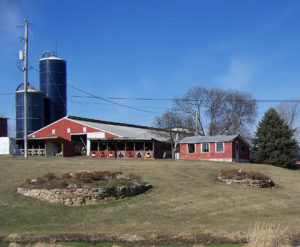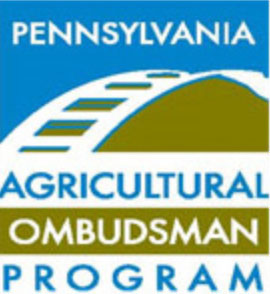Public Relations & Conflict Management
Farming has changed drastically over the past few decades. The nostalgic idea of small farms dotting the landscape does not represent how many modern farms operate. Today, agriculture is  more efficient and productive from the days of old. Farmers can grow more food on fewer acres of land, have increased herd size, and use larger equipment.
more efficient and productive from the days of old. Farmers can grow more food on fewer acres of land, have increased herd size, and use larger equipment.
More and more suburban neighborhoods are expanding into areas that once were farmland. Sometimes neighborhoods are closely located or adjacent to large farming operations. Many of the “new” suburban residents have little previous exposure to agriculture or farming and they may have misconceptions about what activities occur on farms and in rural areas. Neighbors with no connection or understanding of agricultural practices may have little tolerance for the inconvenience of odors from animal housing facilities or manure applications, slow-moving and over-sized equipment on highways, pesticide applications, flies, noise, and dust.
 A good way to help reduce neighbor conflict and improve community relationships is to get to know your neighbor. Establishing a good relationship helps make it easier to discuss a problem if it arises.
A good way to help reduce neighbor conflict and improve community relationships is to get to know your neighbor. Establishing a good relationship helps make it easier to discuss a problem if it arises.
For more information about the neighbor conflict and community relations, go to PA Agricultural Ombudsman Website.
There are many agricultural laws in place in Pennsylvania to help regulate and protect farming activities. One of the laws is PA Act 38 or better known as ACRE. This law deals with two issues: (1) conflict management between agricultural operations and local ordinances and (2) Manure and Odor Management.
Odor is the number one complaint against farms. However, the Odor Management regulation only affects farms classified as CAO and CAFO.
CAFO = Concentrated Animal Feeding Operations have more than 1,000 animal equivalent units (AEUs); or are a concentrated animal operation (CAO) with 301 to 1,000 AEUs
CAO = Concentrated Animal Operation has more than 2 AEUs per acre.
AEU – Animal Equivalent Units = 1000 lbs. of live weight of livestock or poultry animals, on an annualized basis.
Many farms do not fall under the new odor management regulations because they are not a CAFO or a CAO, but there are a few things farmers can do to help keep neighbors happy.
- Get to know your neighbors – farmers can tell their neighbors when they plan to spread manure, AND not spread when they know the neighbors have outdoor plans.
- Don’t haul when there are strong winds blowing toward neighbors’ homes.
- Keep up with the farm’s appearance. People think a neat farm is a “clean” farm and less smelly.
For more information about the Odor Management law and other agricultural regulations, go to the Agricultural Law Resource and Reference Center.
Fly invasion is the number two complaint against agriculture. The life cycle of the fly can be as short as nine days, and the eggs can hatch within a 24-hour period. Flies seek warm, moist environment to survive, and will use manure piles, spilled feed, or other moist environments to grow and pupate. Residents who live close to farms should pick up trash, pet droppings, and other food source for flies. When using fly traps, read the directions carefully and place the trap away from the house. Dr. Gregory Martin, Penn State Cooperative Extension, has done extensive research related to flies and fly control.
Another agricultural regulation is the management of dead stock on the farm. Any animal mortality needs to be properly disposed of within 48 hours. There are four disposal options – rendering, burial, burning, or composting. Rendering is now a limited option. The FDA mandated that after April 2009 no animal feed will contain brain or spinal cord material from slaughtered cattle. This FDA ruling is to safeguard against the potential spread of bovine spongiform encephalopathy (BSE).
The decreasing services of rendering plants, environmental concerns over burial, and the economic costs related to incineration, makes composting a favorable option when dealing with on-farm mortality.
Composting, when done correctly, is an economical and environmentally sound method to dispose of animal carcasses.
 A brochure to help farmers understand the legal options for deadstock disposal was developed by the Agricultural Ombudsman Program. Producers can also visit Penn State’s Composting Website.
A brochure to help farmers understand the legal options for deadstock disposal was developed by the Agricultural Ombudsman Program. Producers can also visit Penn State’s Composting Website.

